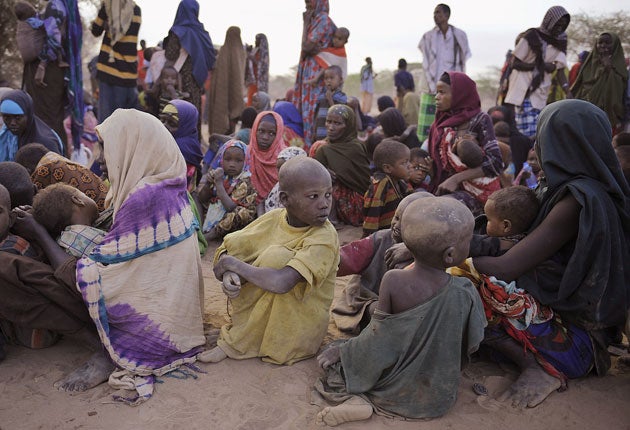Your support helps us to tell the story
From reproductive rights to climate change to Big Tech, The Independent is on the ground when the story is developing. Whether it's investigating the financials of Elon Musk's pro-Trump PAC or producing our latest documentary, 'The A Word', which shines a light on the American women fighting for reproductive rights, we know how important it is to parse out the facts from the messaging.
At such a critical moment in US history, we need reporters on the ground. Your donation allows us to keep sending journalists to speak to both sides of the story.
The Independent is trusted by Americans across the entire political spectrum. And unlike many other quality news outlets, we choose not to lock Americans out of our reporting and analysis with paywalls. We believe quality journalism should be available to everyone, paid for by those who can afford it.
Your support makes all the difference.Marauding gangs and criminals are attacking Somali famine refugees more frequently as they flee across the border to Kenyan camps, but Kenyan police say they do not have enough manpower to stop them.
The lack of manpower underscores a larger problem for Kenya: officials say they are being overwhelmed by the influx of tens of thousands of Somali refugees, and can not stem the attacks.
One 30-year-old woman who watched two of her five children die as they trekked through Somalia was raped after reaching what she hoped would be the safety of Kenyan soil.
"I constantly ask myself, 'Would this have happened to you, or would you have lost your children if you had been in your country?"' said the woman.
"My mind always says: 'You ran away from a problem and ran into another."'
Kenya now hosts nearly 500,000 Somali refugees, and while US and UN officials are quick to praise Kenya for their response to the famine crisis, Kenyan officials are just as quick to tell the US, UN and world leaders that they can not take many more.
President Mwai Kibaki told the US vice president's wife, Jill Biden, during her visit to Kenya on Monday that the Somali refugee population was placing Kenya under extreme pressure and burdening its resources.
Echoing local Kenyan officials who live close to the border, Mr Kibaki advocated that refugee camps be set up inside Somalia near the Kenyan border, so Kenya does not have to accept the thousands more Somalis who arrive each week.
The Dadaab refugee camp - the largest in the world - was built for 90,000 people. The current population is over 400,000 with thousands of new arrivals crammed into areas outside the refugee camp, waiting to be formally admitted.
The police commander at Dadaab, Nelson Shilunji Taliti, said it is hard for authorities to adequately patrol the long and porous border with Somalia, leading to a rise in rape and other types of attacks.
He said police cannot specifically say who is behind the attacks but criminals - both Somalis and Kenyans - operate along the border.
"Most of the victims are the ones who evade border points and pass through areas they believe are unmanned," Mr Taliti said, advising refugees to use official points.
Subscribe to Independent Premium to bookmark this article
Want to bookmark your favourite articles and stories to read or reference later? Start your Independent Premium subscription today.

Join our commenting forum
Join thought-provoking conversations, follow other Independent readers and see their replies
Comments